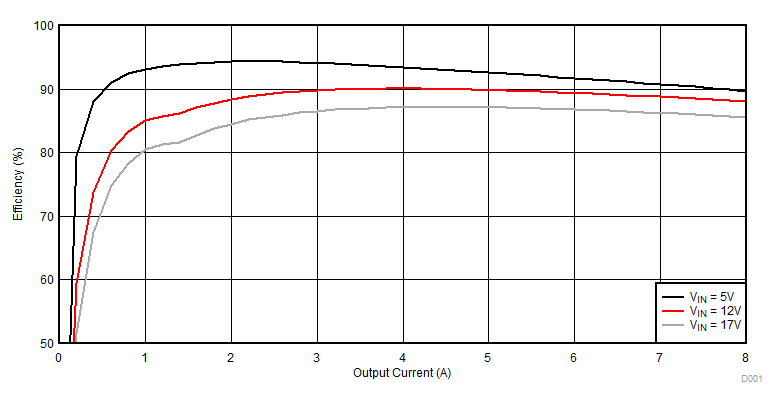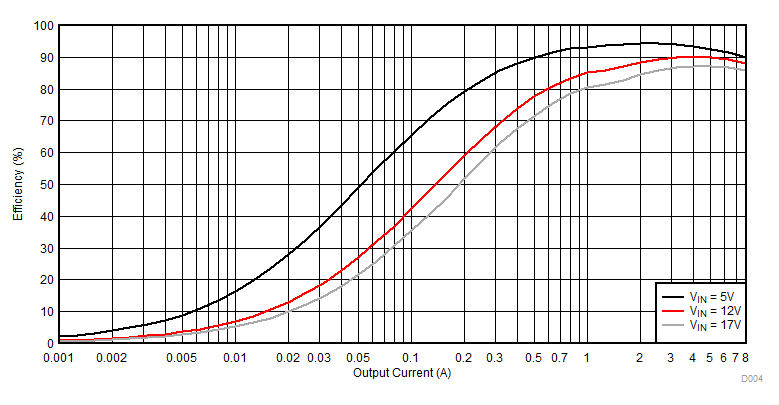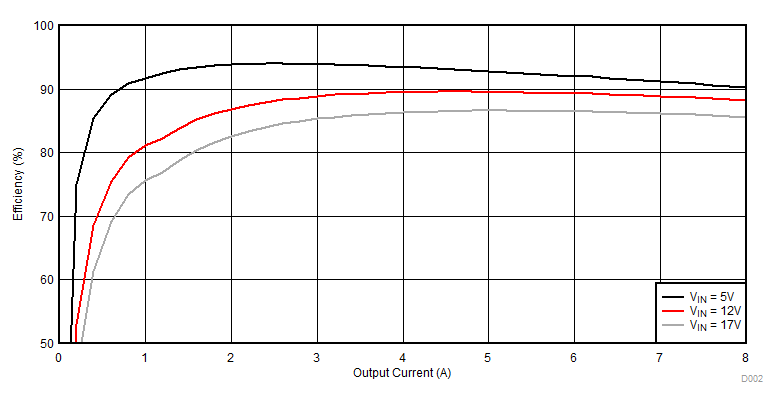SLVUAX8B November 2016 – August 2021 TPS54824
- Trademarks
- 1Introduction
-
2Test Setup and Results
- 2.1 Input/Output Connections
- 2.2 Efficiency
- 2.3 Output Voltage Load Regulation
- 2.4 Output Voltage Line Regulation
- 2.5 Load Transients
- 2.6 Loop Characteristics
- 2.7 Output Voltage Ripple
- 2.8 Input Voltage Ripple
- 2.9 Powering Up
- 2.10 Powering Down
- 2.11 Start-Up Into Pre-Bias
- 2.12 Hiccup Mode Current Limit
- 3Board Layout
- 4Schematic and Bill of Materials
- 5Revision History
2.2 Efficiency
The efficiency of this EVM peaks at a load current of about 4 A and then decreases as the load current increases toward full load. Figure 2-1 shows the efficiency for the TPS54824EVM-779 at an ambient temperature of 25°C.
 Figure 2-1 TPS54824EVM-779 Efficiency - Cyntec Inductor
Figure 2-1 TPS54824EVM-779 Efficiency - Cyntec InductorFigure 2-2 shows the efficiency for the TPS54824EVM-779 using a semi-log scale to more easily show efficiency at lower output currents. The ambient temperature is 25°C.
 Figure 2-2 TPS54824EVM-779 Low Current Efficiency - Cyntec Inductor
Figure 2-2 TPS54824EVM-779 Low Current Efficiency - Cyntec InductorFigure 2-3 shows the efficiency for the TPS54824EVM-779 with a WE 744311100 inductor. The ambient temperature is 25°C.
 Figure 2-3 TPS54824EVM-779 Efficiency - Wurth Electronics 744311100 Inductor
Figure 2-3 TPS54824EVM-779 Efficiency - Wurth Electronics 744311100 InductorThe efficiency may be lower at higher ambient temperatures, due to temperature variation in the drain-to-source resistance of the internal MOSFETs.